Starchy foods often get a bad rap, but not all starches are created equal. Some can actually be part of a healthy diet, especially when considering their glycemic index. The glycemic index measures how quickly foods raise blood sugar levels. Low glycemic index foods are digested more slowly and result in a smaller increase in blood sugar and insulin than high GI foods.
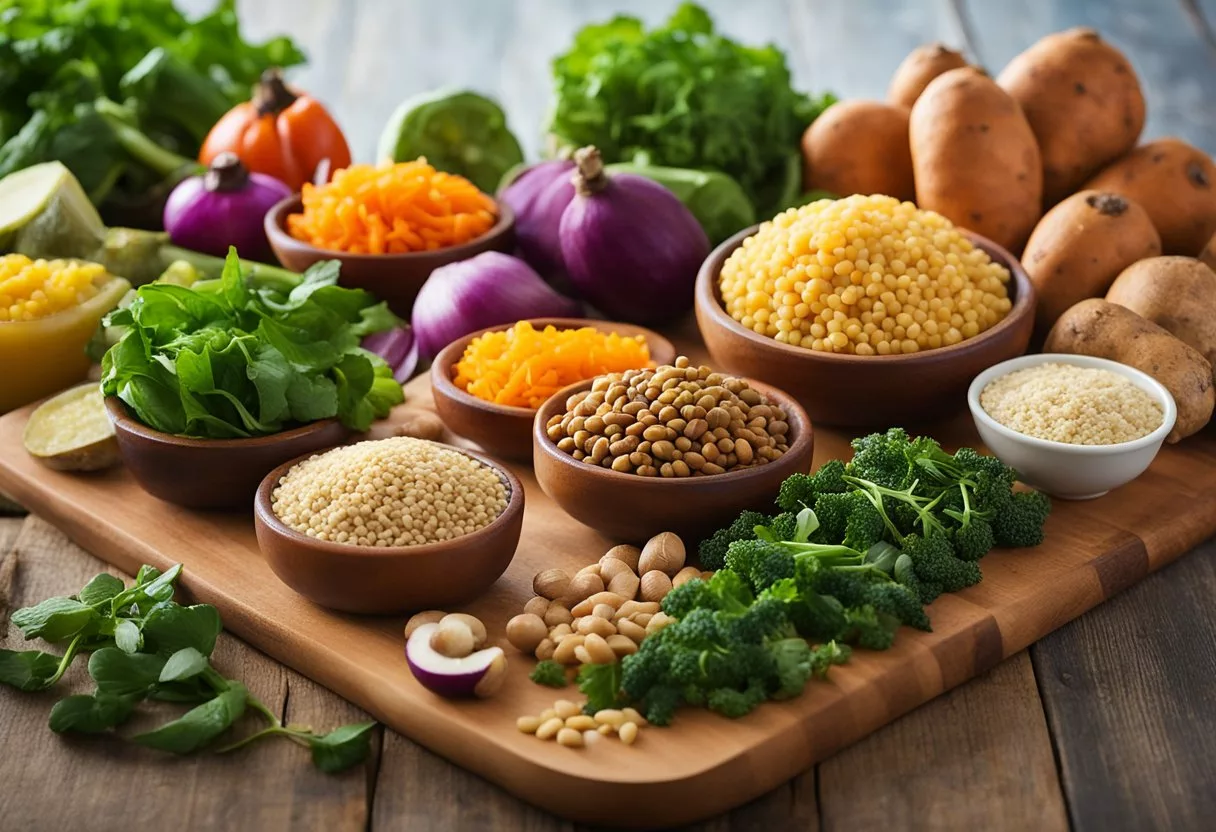
Choosing the right starchy foods can help manage blood sugar levels and provide lasting energy. For example, beans, minimally processed grains, and most fruits and vegetables have a low glycemic index. These foods can be good choices for people looking to control their blood sugar or maintain a healthy weight.
It’s important to note that the glycemic index is just one factor to consider when making food choices. Other aspects like nutrient content and overall health benefits should also be taken into account. By understanding the glycemic index of starchy foods, people can make more informed decisions about what to include in their diets.
Key Takeaways
- Low GI starchy foods can help manage blood sugar levels and provide sustained energy
- Beans, minimally processed grains, and most fruits and vegetables are good low GI choices
- The glycemic index is one of several factors to consider when selecting foods for a healthy diet
Understanding the Glycemic Index
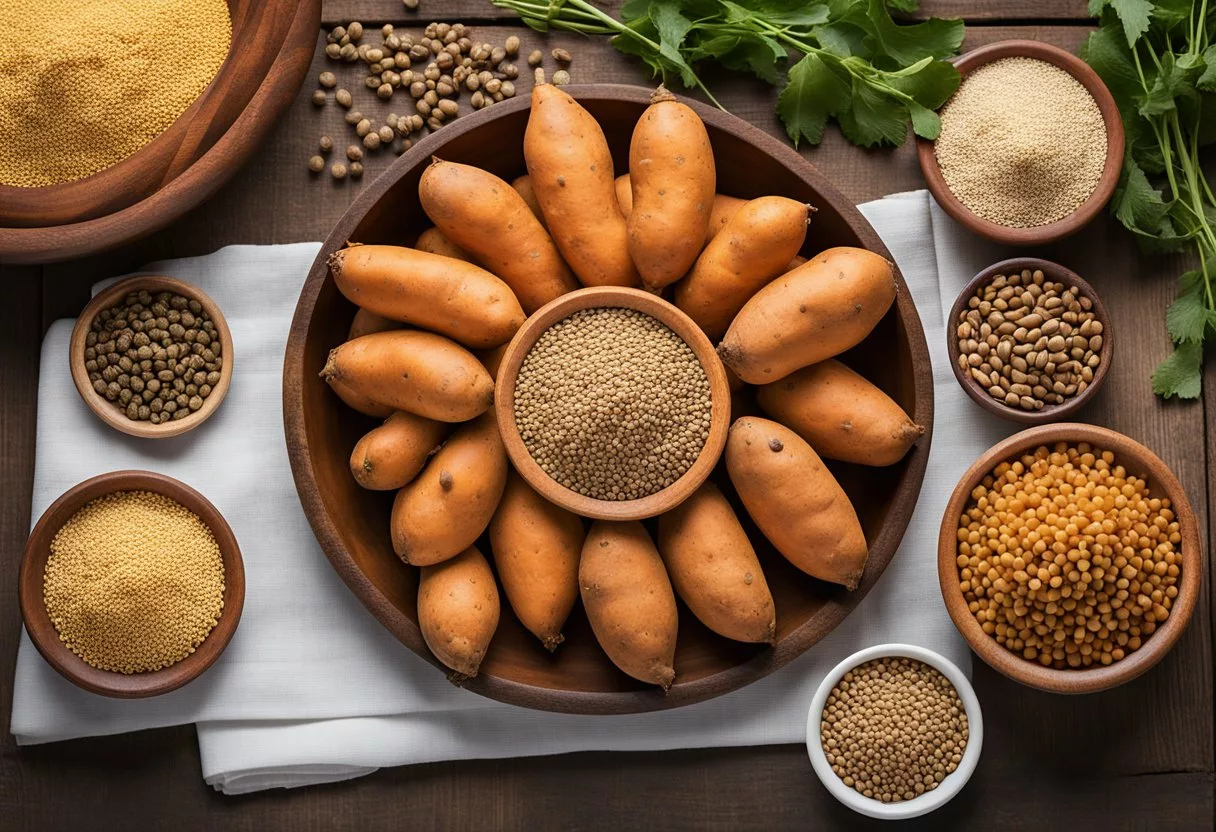
The glycemic index ranks foods based on how they affect blood sugar levels. It helps people manage their blood glucose, especially those with diabetes.
Basics of Glycemic Index and Glycemic Load
The glycemic index (GI) measures how quickly foods raise blood sugar. Foods are ranked on a scale of 0 to 100. Low GI foods score under 55, medium GI foods are 56-69, and high GI foods are 70 or above.
Glycemic load (GL) takes portion size into account. It’s calculated by multiplying the GI by the grams of carbs in a serving, then dividing by 100.
Low GI and GL foods include:
- Most fruits and vegetables
- Whole grains
- Legumes
High GI and GL foods include:
- White bread
- Sugary drinks
- Processed snacks
Importance for Diabetes Management
The glycemic index is a useful tool for people with diabetes to control blood sugar. Choosing low GI foods can help prevent spikes in blood glucose levels.
Low GI diets may improve insulin sensitivity. This can make it easier for the body to use glucose effectively.
The American Diabetes Association suggests using the glycemic index as part of an overall healthy eating plan. It’s not meant to be the only factor in food choices.
Pairing high GI foods with protein or fat can help lower the overall glycemic impact of a meal.
Starchy Foods and Their GI Values
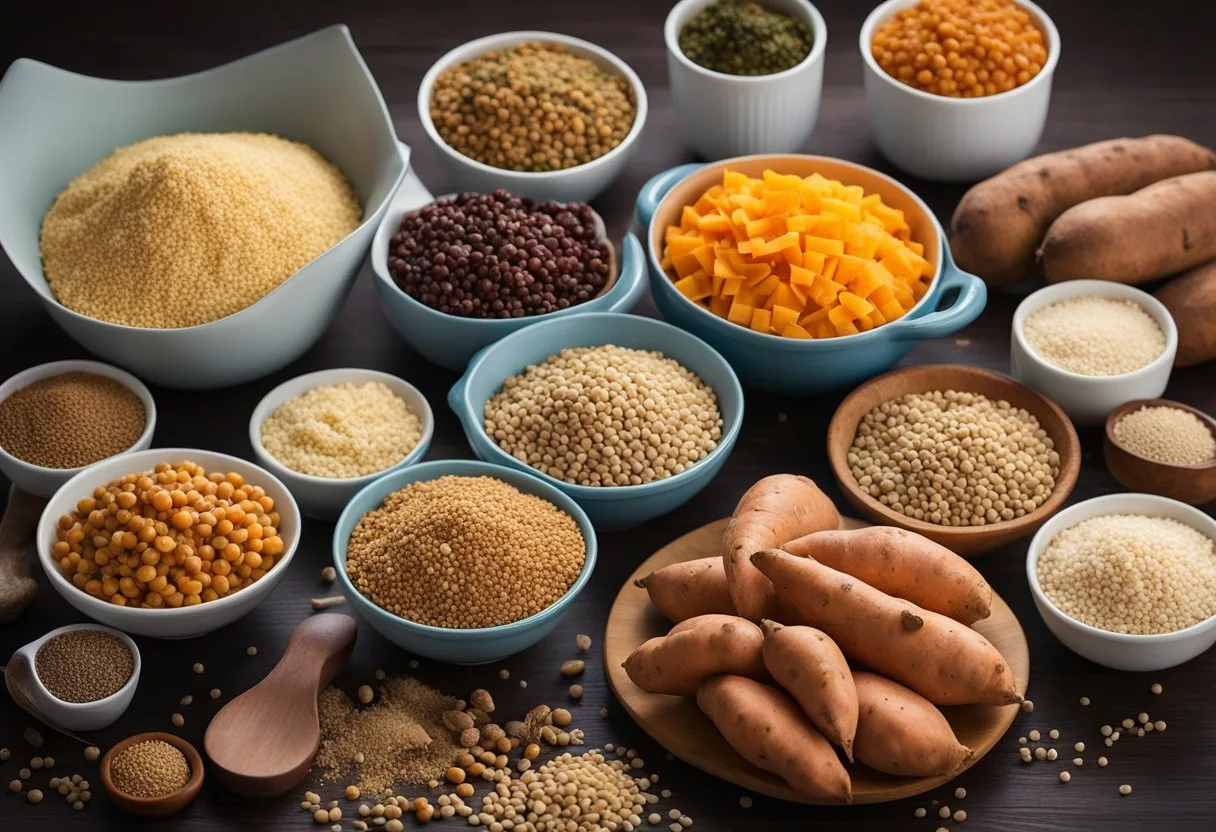
Starchy foods can have varying impacts on blood sugar levels. The glycemic index (GI) measures how quickly these foods raise blood glucose. Let’s explore different types of starchy foods and their GI values.
Grains and Cereals
Grains and cereals are common sources of carbohydrates in many diets. Their GI values can differ widely:
- White bread: High GI (70-75)
- Whole grain bread: Medium GI (50-60)
- White rice: High GI (70-75)
- Brown rice: Medium GI (50-55)
- Barley: Low GI (25-30)
- Oatmeal: Medium GI (55-60)
Whole grains tend to have lower GI values due to their higher fiber content. This fiber slows down digestion and glucose release into the bloodstream.
Pasta, when cooked al dente, has a medium GI (around 50-55). Overcooking pasta can increase its GI value.
Legumes and Beans
Legumes and beans are excellent low GI starchy foods. They provide complex carbohydrates and fiber:
- Lentils: Low GI (30-35)
- Chickpeas: Low GI (30-35)
- Kidney beans: Low GI (25-30)
- Soybeans: Low GI (15-20)
These foods are rich in protein and fiber. This combination helps slow down digestion and prevents rapid blood sugar spikes.
Legumes and beans also contain resistant starch. This type of starch resists digestion in the small intestine, further lowering their GI impact.
Roots and Tubers
Root vegetables and tubers can vary in their GI values:
- White potatoes: High GI (70-80)
- Sweet potatoes: Medium GI (50-60)
- Carrots: Low GI (35-40)
- Yams: Medium GI (50-55)
Sweet potatoes have a lower GI than white potatoes. They contain more fiber and complex carbohydrates.
Cooking methods can affect the GI of these foods. Boiling tends to result in lower GI values compared to baking or frying.
The fiber content in root vegetables helps slow down digestion. This can lead to a more gradual rise in blood sugar levels.
Dietary Strategies for Blood Glucose Control
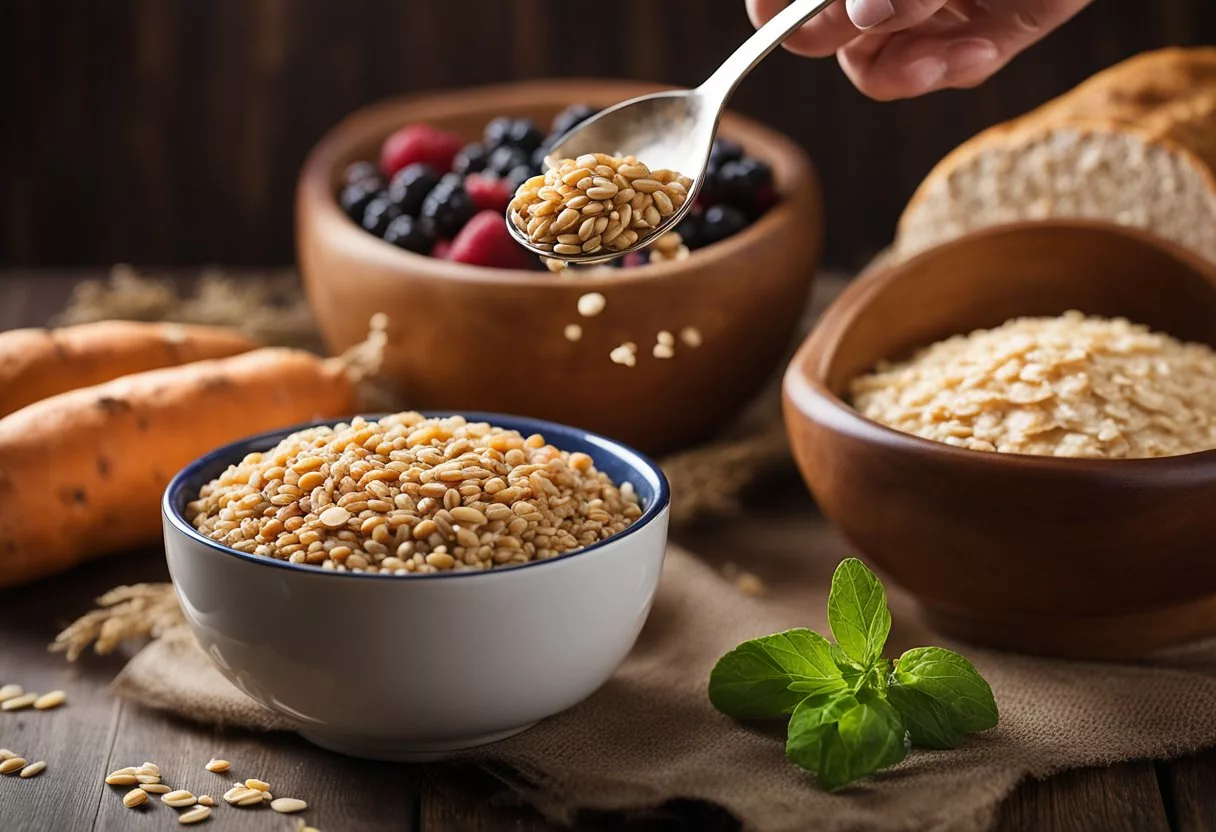
Managing blood sugar levels through diet is key for people with diabetes. Smart food choices and meal planning can help control glucose spikes and improve overall health.
Incorporating Low-GI Starches in the Diet
Low-glycemic index (GI) foods can help manage blood glucose levels. These foods are digested more slowly, leading to a gradual rise in blood sugar.
Some examples of low-GI starches include:
- Sweet potatoes
- Whole grain pasta
- Quinoa
- Barley
- Lentils
Replacing high-GI starches with these options can improve glycemic control. For instance, choosing brown rice over white rice or whole grain bread instead of white bread.
It’s important to consider portion sizes too. Even low-GI foods can affect blood sugar if consumed in large amounts.
Balancing Macronutrients
A balanced diet includes the right mix of carbohydrates, proteins, and fats. This balance is crucial for managing blood glucose levels.
Carbohydrates have the most direct impact on blood sugar. Choosing complex carbs over simple sugars can help maintain steady glucose levels.
Protein and fat can help slow down carbohydrate digestion. This leads to a more gradual rise in blood sugar. Including lean proteins and healthy fats with each meal can improve glycemic response.
A general guideline for macronutrient balance:
- 45-65% of calories from carbohydrates
- 15-20% from protein
- 20-35% from fat
Meal Planning for Diabetes
Effective meal planning is a powerful tool for managing Type 2 diabetes. It involves considering the timing, amount, and types of food consumed.
Key strategies include:
- Eating regular meals: This helps prevent large fluctuations in blood sugar.
- Consistent carbohydrate intake: Eating similar amounts of carbs at each meal can make blood sugar easier to predict and manage.
- Using the plate method: Fill half the plate with non-starchy vegetables, a quarter with lean protein, and a quarter with whole grains or starchy vegetables.
Monitoring portion sizes is crucial. Using measuring tools or visual guides can help ensure appropriate serving sizes.
Including fiber-rich foods in meals can also help slow digestion and reduce blood sugar spikes.
Comparing Starchy Foods
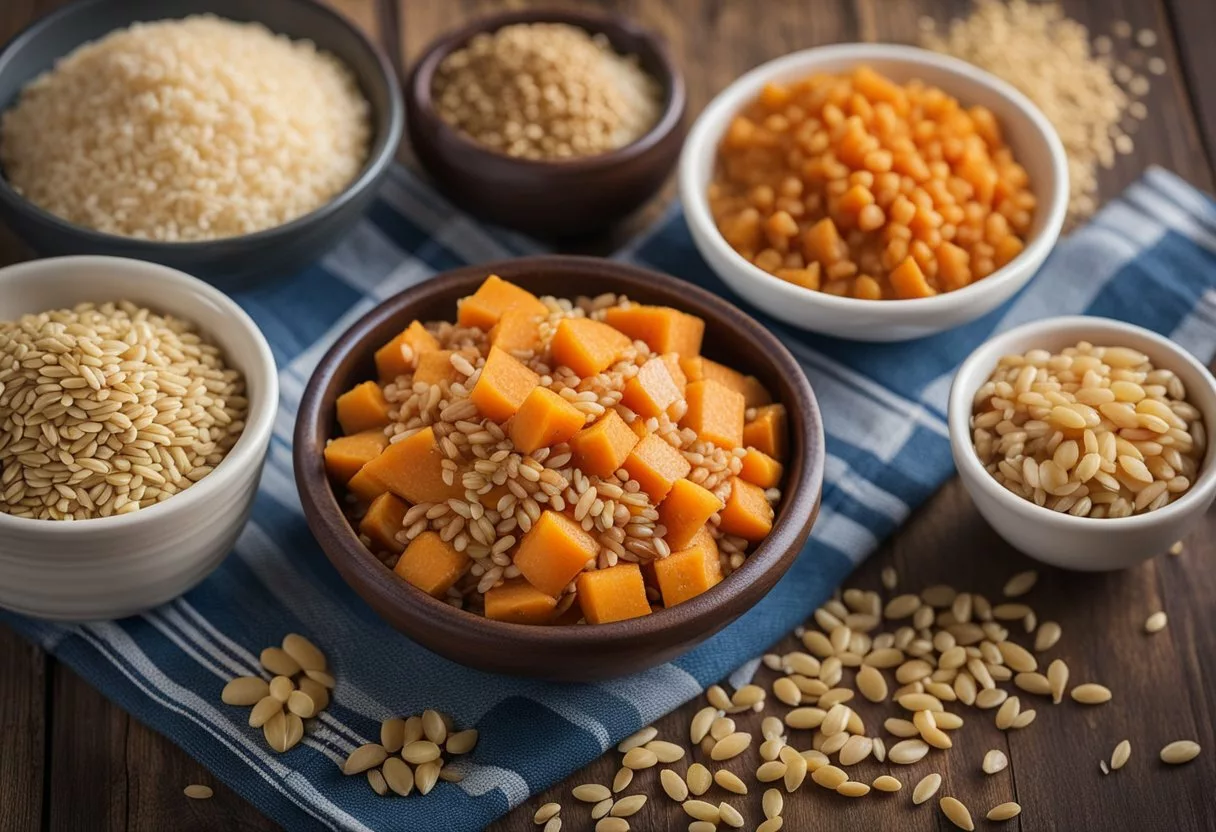
Starchy foods vary widely in their effects on blood sugar. Some starches are digested quickly and raise glucose levels rapidly, while others break down more slowly.
Low-GI Versus High-GI Starchy Foods
Low glycemic index (GI) foods include beans, most fruits, and whole grains. These foods cause a smaller rise in blood sugar compared to high-GI options. Pasta and brown rice also have lower GI values than white bread or white rice.
High-GI starchy foods include white bread, white potatoes, and many breakfast cereals. These items are quickly broken down into glucose, causing blood sugar to spike more rapidly.
The glycemic response to different starches can vary between individuals. Factors like ripeness, cooking method, and food combinations also play a role.
Impact of Processing and Cooking
Processing and cooking methods change how starchy foods affect blood sugar. Grinding grains into flour increases their GI. Cooking starches in water and then cooling them can create resistant starch, which lowers the GI.
Boiling tends to result in lower GI values compared to baking or frying. For example, boiled potatoes have a lower GI than baked or mashed potatoes.
Whole grains generally have a lower GI than refined grains. The fiber in whole grains slows digestion and reduces the glycemic response.
Beyond Glycemic Index: Overall Health Benefits
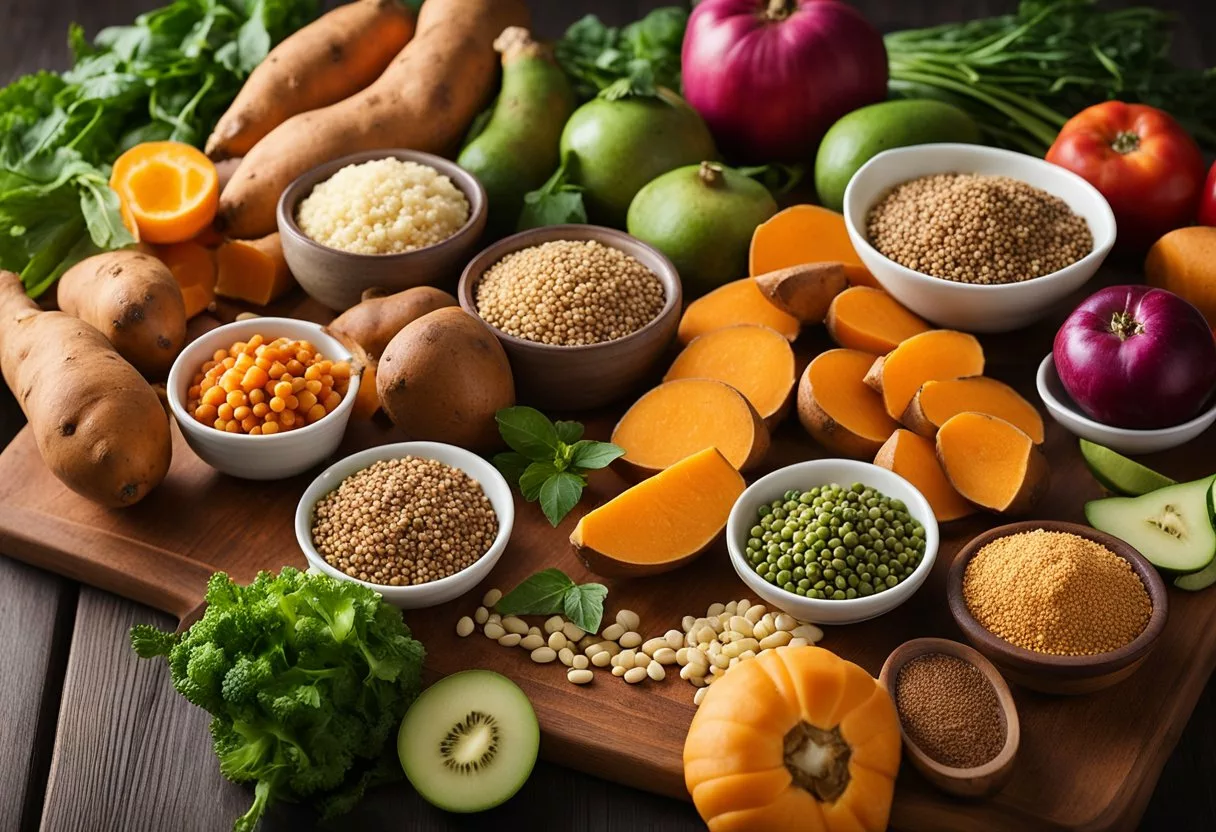
Low glycemic foods offer benefits beyond blood sugar control. They can impact weight, heart health, and cancer risk in positive ways.
Role in Weight Management
Low glycemic foods may help with weight control. They tend to be more filling, which can reduce overeating. These foods often have more fiber and nutrients.
Fiber slows digestion and promotes fullness. This can lead to eating fewer calories overall.
Some low glycemic foods like vegetables are low in calories but high in volume. They help people feel satisfied while consuming fewer calories.
Studies suggest low glycemic diets may be more effective for weight loss than other diets. However, more research is needed to confirm long-term effects.
Heart Disease and Blood Cholesterol
Low glycemic diets may improve heart health. They often include foods that are good for the heart.
Research shows these diets can lower total and LDL (bad) cholesterol. This reduction in cholesterol can decrease the risk of heart disease.
Many low glycemic foods are rich in nutrients that support heart health. These include:
- Whole grains
- Legumes
- Nuts
- Seeds
- Fruits
- Vegetables
These foods provide fiber, antioxidants, and healthy fats. All of these can help protect the heart.
Implications for Cancer Prevention
Some studies suggest low glycemic diets might help prevent certain cancers. The link is not fully proven, but there are some theories.
High blood sugar and insulin levels might promote cancer growth. Low glycemic diets help control these levels.
Many low glycemic foods are plant-based. Plant foods contain compounds that may fight cancer. These include antioxidants and phytochemicals.
Fiber, found in many low glycemic foods, may also play a role. It can help remove toxins from the body.
A meta-analysis of studies showed a possible link between low glycemic diets and reduced cancer risk. More research is needed to confirm these findings.
Supportive Foods and Alternatives
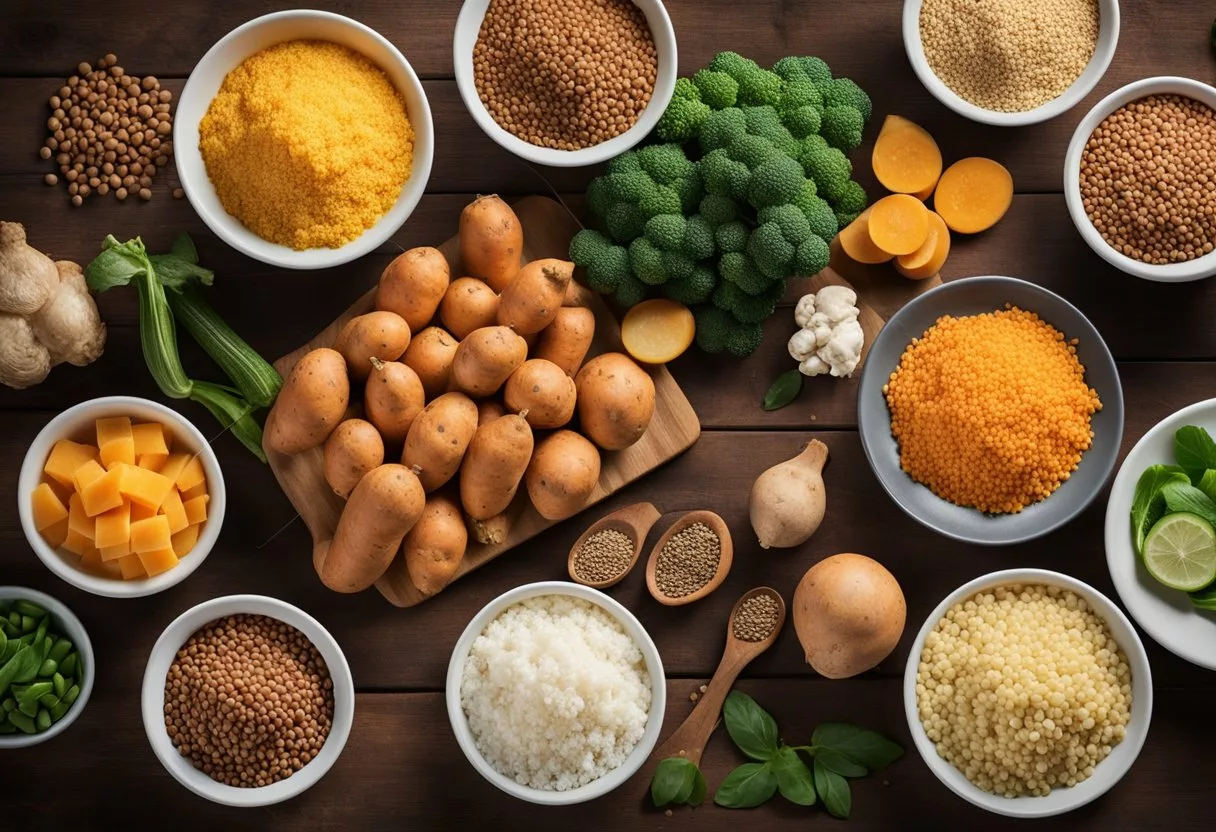
Eating a low glycemic index diet involves more than just avoiding high-GI foods. Many nutritious options can help balance blood sugar and provide essential nutrients.
Fruits and Vegetables with Low GI
Non-starchy vegetables are excellent choices for a low-GI diet. Leafy greens like spinach, kale, and lettuce have minimal impact on blood sugar. Broccoli, cauliflower, and bell peppers are also great options.
Fruits can be part of a low-GI diet when chosen carefully. Berries, cherries, and grapefruit tend to have lower GI values. Oranges are a good choice, providing fiber and vitamin C while having a relatively low GI.
Apples and pears are fiber-rich fruits that can help slow digestion and reduce glucose spikes. It’s best to eat whole fruits rather than juices to maintain the fiber content and lower the glycemic impact.
Healthy Fats and Nuts
Incorporating healthy fats can help lower the overall glycemic load of meals. Olive oil is a heart-healthy option that doesn’t affect blood sugar levels.
Nuts are nutrient-dense foods that support a low-GI diet. Cashews, peanuts, and almonds are good choices. They provide protein, fiber, and healthy fats, which can help slow digestion and reduce glucose spikes.
Avocados are another excellent source of healthy fats. They’re low in carbohydrates and high in fiber, making them ideal for blood sugar management.
Seeds like chia, flax, and pumpkin seeds are also beneficial. They’re rich in omega-3 fatty acids and fiber, supporting overall health while maintaining stable blood sugar levels.
Proteins that Support Low-GI Eating
Lean proteins are essential for a balanced low-GI diet. Chicken, turkey, and fish are excellent options that don’t impact blood sugar levels.
Beans and lentils are protein-rich foods that also provide fiber and complex carbohydrates. Black beans, chickpeas, and red lentils are particularly good choices. They have a low GI and can help stabilize blood sugar levels.
Eggs are a versatile protein source that fits well in a low-GI diet. They’re rich in nutrients and don’t affect blood glucose levels.
Greek yogurt is a protein-packed dairy option. It’s lower in carbs than regular yogurt and can be a good choice for those following a low-GI eating plan.
Frequently Asked Questions
Many starchy foods have a low glycemic index and can be part of a healthy diet. These options support blood sugar management and provide essential nutrients. Let’s explore some specific examples.
What are some starchy foods that are also low on the glycemic index?
Sweet potatoes, beans, lentils, and barley are starchy foods with a low glycemic index. These foods release glucose slowly into the bloodstream, helping maintain steady blood sugar levels.
Quinoa and oats are also excellent low-GI starchy options. They provide complex carbohydrates and fiber, which contribute to their lower glycemic impact.
Which low glycemic index carbohydrates are best for a diabetic diet?
For a diabetic diet, non-starchy vegetables like broccoli, spinach, and bell peppers are ideal low-GI carbohydrates. These vegetables are nutrient-dense and have minimal impact on blood sugar.
Whole grains such as bulgur, barley, and brown rice can also be beneficial. Their high fiber content helps slow down glucose absorption.
Can you list some starchy foods that are unlikely to spike blood sugar levels?
Chickpeas, kidney beans, and lentils are starchy foods that typically don’t cause rapid blood sugar spikes. Their high fiber and protein content contribute to a slower digestion process.
Rolled oats and steel-cut oats are also unlikely to cause sharp blood sugar increases. These whole grains have a lower GI compared to refined grain products.
What are some starchy alternatives with a low glycemic index suitable for a healthy diet?
Butternut squash and pumpkin are nutritious, low-GI alternatives to higher-GI starchy vegetables. They provide vitamins, minerals, and fiber while having a minimal impact on blood sugar.
Resistant starch found in cooled potatoes and rice can be a healthier option. This type of starch resists digestion and acts more like fiber in the body.
Could you name several starchy food options that support blood sugar management?
Millet, buckwheat, and amaranth are lesser-known grains that support blood sugar management. These ancient grains have a lower GI compared to common wheat products.
Legumes like black beans, navy beans, and split peas are excellent for blood sugar control. Their combination of protein and fiber helps regulate glucose release into the bloodstream.
What are some examples of low glycemic index fruits and vegetables that contain starch?
Green bananas and plantains contain resistant starch, which has a lower glycemic impact than ripe bananas. This starch acts more like fiber, supporting digestive health and blood sugar control.
Green peas and corn are starchy vegetables with a relatively low glycemic index. They provide essential nutrients and fiber while having a moderate effect on blood glucose levels.
